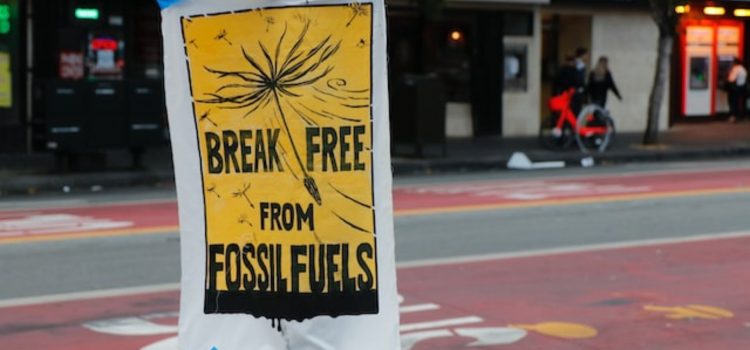

This article is an excerpt from the Shortform book guide to "Numbers Don't Lie" by Vaclav Smil. Shortform has the world's best summaries and analyses of books you should be reading.
Like this article? Sign up for a free trial here.
Can renewable energy replace fossil fuels? How do renewable energy sources compare to fossil fuel burning in terms of efficiency and output?
Transitioning our energy sources away from fossil fuel consumption is a key environmental challenge of the 21st century. However, replacing fossil fuels altogether is likely impossible—at least in the near future.
In this article, we’ll discuss the main problems with alternatives to fossil fuels (nuclear energy, wind energy, solar energy).
Nuclear Energy Isn’t Strong Enough
Many point to nuclear energy as the best possible alternative to fossil fuels; when it began to take off in the 1970s, some predicted it would provide virtually all of the world’s electricity by 2000. However, Smil argues that it has failed to do so for several reasons.
Catastrophic failures of nuclear power plants occurred at Three Mile Island, Pennsylvania, at Chernobyl, Ukraine, and at Fukushima, Japan, which has made the public and governments more skeptical of nuclear energy. Also, the constructions of many nuclear plants have gone over budget, there is still not a viable option for permanent storage of nuclear waste, and we still haven’t come up with a safer, less expensive design for new reactors.
For these reasons, the prominence of nuclear energy has receded, especially in the Western world, writes Smil. Germany and Sweden are removing nuclear energy entirely, and France, the leading adopter of nuclear energy, is also cutting back. As a result, the percentage of global electricity powered by nuclear energy has gone from 18% in 1996 to 10% in 2018. Though nuclear power still has the potential to drastically reduce carbon emissions, it isn’t on track to do so, as it is estimated to provide only about 12% of electricity by 2040.
| Nuclear Energy Continues to Decline Beyond the publicized failures of nuclear energy Smil mentions, there are other reasons nuclear energy failed to take off, including the low cost of natural gas, the falling cost of renewables, and the fallout and heightened safety requirements caused by the 2011 Fukushima accident. Though scientists believe nuclear energy will play a big role in reducing carbon emissions, 2021 estimates from IAEA project nuclear energy to account for only 6 to 12% of global electricity in 2050. What’s more, when looking back at previous projections, we see that the estimates for future nuclear energy usage are becoming smaller and smaller: In 2007, the low-end projection for 2030 nuclear energy production was 447 gigawatts. By 2016, the low-end projection was significantly lower at 390 gigawatts. These projections indicate that nuclear energy may not play such a significant role in the reduction of carbon emissions. |
Wind Energy Requires Fossil Fuel Inputs
According to Smil, numbers don’t suggest that wind turbines will provide an efficient solution to environmental problems, either. The main issue with wind-generated electricity is the amount of fossil fuel required to build wind turbines. Though a wind turbine can generate the energy it took to produce it in less than a year, these turbines only produce energy intermittently, and we need large amounts of steel, oil, and cement to make them. For wind to provide just a quarter of the world’s electricity by 2030, we’d need around 450 million tons of steel, which as of now can only be made using coal and natural gas. Until we can make wind turbines using only renewable resources, we will continue to depend on fossil fuels.
(Shortform note: Though it will indeed be difficult to replace carbon-powered electricity with renewable energy, it is theoretically possible. A 2012 study found that there is enough wind energy to meet global demand. As of 2012, humans used about 18 terawatts of power a year, while more than 400 terawatts of power could be extracted from surface winds every year. Furthermore, wind turbines make up for the carbon emissions of their production in as little as three months.)
Solar Energy Is Growing Slowly
Solar energy, though efficient, provides more evidence to Smil’s argument that energy transitions take time: The photovoltaic effect, the generation of electricity when a material is exposed to light, was first discovered in 1876. Yet it wasn’t until the 21st century that solar electricity generation became efficient enough for large-scale usage. In 2000, solar power provided 0.01% of global electricity. In 2010, that number went up to 0.16%. By 2018, it was at 2.2%. This is a sharp rise, and with solar energy becoming more efficient, it could certainly make a dent in global carbon emissions. But it isn’t likely to replace fossil fuels entirely.
(Shortform note: Though it will take significant investment, scientists believe it is possible to shift to 100% renewable energy by 2050 with the help of solar energy. A 2020 study predicted what it would take for the solar energy industry to meet the Paris Agreement targets: Along with other renewable energy sources, we would need a capacity of 70 to 80 terawatts from photovoltaic systems, more than 100 times what we currently have. While this is a drastic increase, it isn’t impossible, as solar energy is expected to become much more cheap and efficient in the coming decades.)
Transitioning to Renewable Energy
If we hope to provide year-round renewable electricity to big cities through wind and solar power, we’ll need better batteries to store saved-up energy more efficiently, claims Smil. This is because there are gaps in the flow of wind and solar energy: For instance, an unusually cloudy or windless month could render a city’s solar panels or windmills inadequate.
As of now, lithium-ion batteries are the best thing we have, but they are still too inefficient to hold enough power for a city of millions. We’ll probably need something more efficient, like hydrogen-based or compressed air batteries, but the technology for those is still in early development.
(Shortform note: A 2013 study examined how efficient it would be to store surplus solar and wind energy using current battery technologies. It found that when factoring in the energy costs of storing it, this could work for solar energy but not for wind energy. This is because it is more energy-efficient to temporarily shut down a wind turbine than it is to store its surplus energy in batteries. In other words, building the batteries to store the surplus electricity would require too much energy for it to be worth it.)

———End of Preview———
Like what you just read? Read the rest of the world's best book summary and analysis of Vaclav Smil's "Numbers Don't Lie" at Shortform.
Here's what you'll find in our full Numbers Don't Lie summary:
- How you can understand the world by understanding numbers and statistics
- Why the infant mortality rate is a better indicator of standard of living than GDP per capita
- Why nuclear energy is not the answer to sustainability






